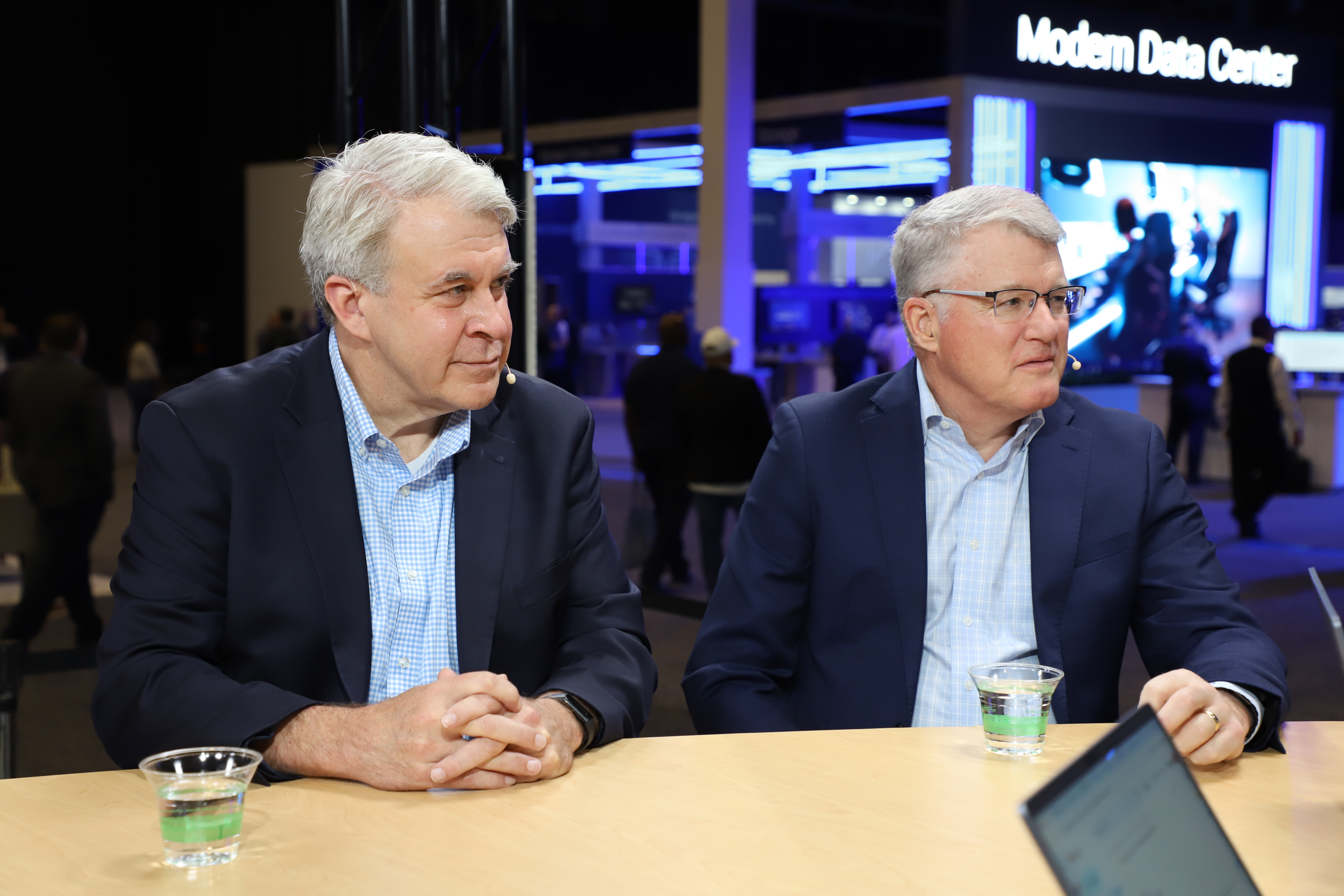Customer zero is becoming a strategic advantage in the age of AI-powered services.
Enterprises deploying artificial intelligence at scale are learning that the real advantage isn’t just in new tools, it’s in being their own first customer. This “customer zero” approach lets them test AI in-house, fine-tune it in real time and apply those insights externally. By embedding intelligence into workflows from day zero, they gain speed, precision and a repeatable model for real-world impact, according to Doug Schmitt (pictured, right), chief information officer of Dell Technologies Inc. and president of Dell Technologies Services Inc.
Dell’s Scott Bils talks to theCUBE about the “customer zero” model.
“You think about all the innovation, the technology all coming together — truly offers a once in a lifetime chance to really look at the business model and more specifically the customer services models that can be there and what we can do for our customers is amazing,” Schmitt said. “We’ve talked about that in the past and what we’re doing to really make it easier on our customers, but just maybe going a level above that as getting the dual role CIO and getting the privilege of leading services. When you stand back and look at that, we get to be customer zero from an IT perspective and leverage the services and learn that we’re also then deploying and leveraging with our customers. That’s really a value added of having those together.”
Schmitt and Scott Bils (left), vice president and general manager of product management, professional services, at Dell Technologies, spoke with theCUBE’s John Furrier and Dave Vellante at Dell Technologies World, during an exclusive broadcast on theCUBE, News Media’s livestreaming studio. They discussed how being “customer zero” allows enterprises, particularly Dell, to test and refine AI internally, creating a strategic advantage that drives faster, more effective AI deployment for customers. (* Disclosure below.)
Customer zero and the path to AI service excellence
Acting as customer zero gives Dell greater control over AI’s impact while grounding innovation in real business needs, not theory. By testing and refining AI internally, Dell builds credibility and sharpens its services-led approach, guiding customers from strategy to deployment. That firsthand experience helps reduce friction and deliver smoother, faster AI transformations across the enterprise, according to Bils.
“When you take a look at what we’re doing from a professional services standpoint, it’s really to help customers on their end-to-end journey and helping them drive AI transformation. It’s around helping them deploy,” he said. “We provide the consulting services and manage services around it all the way from day zero to day two plus. As we go through the journey internally at Dell, [it] provides us a tremendous amount of insight that we can then take to our customers and help accelerate their journey.”
This internal-first mindset has also enabled Dell to digitize and refine its own processes, creating a blueprint that customers can follow. AI is layered into workflows that are already disciplined and well understood, allowing for both rapid experimentation and reliable results. That strong foundation of data, automation and process discipline provides fertile ground for scalable AI and LLM deployment, Schmitt noted.
“You also have to bring your AI and your data to the process,” he said. “I don’t think you can just put the AI on top of it and hope for something to be outcome. We have been digitizing our processes and services for a number of years. What that’s allowed us to do is to really see real time where things are at when now you add AI capabilities on it, we’re able to digitize those processes. This is happening real time, providing real benefits to the customers.”
Customer zero is more than a model; it’s a mindset that blends internal accountability with innovation, giving organizations the confidence to build, test and deliver real-world AI outcomes. As AI factories mature and agents begin to automate decisions across the enterprise, that feedback loop between internal use and external delivery will be essential.
“We have the data, the process, the telemetry in those processes and next you start to add in AI, unstructured data, the LLMs, the capabilities of managing all this stuff real time,” Schmitt said. “Then you get the closed loop process. Add that to the bottom of that. We’re feeding this back to the product groups. They’re getting that data back real time so that we’re actually taking steps out for the customer so they don’t ever even have to deal with the services directly.”
Here’s the complete video interview, part of News’s and theCUBE’s coverage of Dell Technologies World:
(* Disclosure: TheCUBE is a paid media partner for Dell Technologies World. Neither Dell Technologies Inc., the primary sponsor of theCUBE’s event coverage, nor other sponsors have editorial control over content on theCUBE or News.)
Photo: News
Your vote of support is important to us and it helps us keep the content FREE.
One click below supports our mission to provide free, deep, and relevant content.
Join our community on YouTube
Join the community that includes more than 15,000 #CubeAlumni experts, including Amazon.com CEO Andy Jassy, Dell Technologies founder and CEO Michael Dell, Intel CEO Pat Gelsinger, and many more luminaries and experts.
THANK YOU








